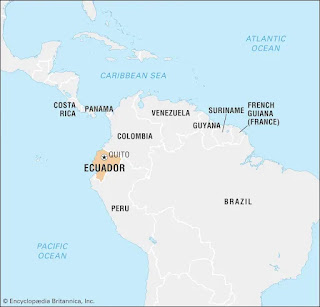Final Hazard Report

Main Hazards in Ecuador: Earthquakes and Floods Many natural hazards happen in Ecuador such as floods, landslides, and droughts. But in this report, I will be talking about the two main hazards that occur in Ecuador. Earthquakes and Floods. The cause of an earthquake can in Ecuador is because of the environment of where this country is located. It is located in an intense systematic environment, meaning that it is more intense by Tectonic Plates shifting and getting stuck, causing them to touch and cause friction. This leads to the ground moving and shaking up buildings. The worst case an earthquake can do is cause liquefaction which leads up to buildings collapsing because of the loosely packed ground. I am addressing this hazard as a priority to spread awareness to people that might experience future earthquakes in their lifetime. I will be giving safety tips and reconditions for these hazards. Some migration effort that we can do for earthquakes is by identifying hazards...





